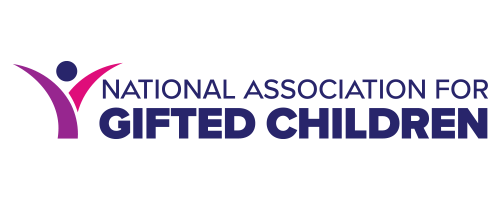Validation Before Acceleration
By Neily C. Snook, Ph.D., NBCT, Social Emotional Development Network Chair-Elect
Gifted education often focuses on academic acceleration, which includes advanced coursework, compacted curricula, and enrichment activities designed to challenge gifted learners. However, before acceleration can be effective, students’ emotional regulation must be addressed. When gifted students’ emotions are acknowledged and validated, they are better equipped to engage in complex cognitive tasks and take advantage of the opportunities that acceleration offers.
Understanding Emotional Intensity
Gifted students experience the world through a magnified emotional lens. Their empathy emerges early, and their sensitivity to injustice can be overwhelming. As Webb et al. (2007) noted, gifted children possess an “unyielding need to understand their world,” which often fuels both curiosity and frustration. Emotional intensity is a deep and frequently overwhelming sensitivity to self and surroundings (Hébert, 2021). Gifted students frequently experience emotional highs and lows that can interfere with learning, particularly when they perceive misunderstanding or invalidation from others. As Daniels and Piechowski (2009) explain in Living with Intensity, the experiences of gifted individuals are often more complex and vivid than those of typical learners.
Regulation Before Rigor
When a gifted student is overwhelmed by emotion, they struggle to access higher-order thinking and to retain information. Social-emotional learning (SEL) practices can help students return to a calm state and re-engage in learning. Research confirms that SEL instruction improves academic achievement by an average of 11 percent while also increasing appropriate social behavior and reducing stress (Durlak et al., 2011). When stress hormones like cortisol flood the brain, information struggles to pass through the amygdala to the prefrontal cortex, where reasoning and memory formation occur. According to Sylwester (1995), “emotions drive attention, which drives learning and memory.” If we want gifted students to engage in accelerated learning, we must first help them feel safe emotionally.
Naming to Tame
One of the most effective strategies for emotional regulation is helping students identify and name their emotions. Labeling emotions activates the brain’s reflective processes and reduces the amygdala’s reactivity. For gifted learners who often believe something is wrong with them because of their intense emotional reactions, this process can be transformational. As students learn to describe their emotions (“I feel anxious because I care so much about doing well”), they begin to reframe their intensity as a strength of motivation and empathy. Educators can model this process through emotional check-ins, reflective journaling, and class discussions that link literature or historical figures to emotional experiences. The use of bibliotherapy helps students gain insight, validate their experiences, expand their emotional vocabulary, and develop a framework for discussing emotions.
Teaching the Language of Emotions
Gifted learners benefit when classrooms include explicit instruction in emotional literacy. Educators can equip students with vocabulary and frameworks that foster reflection and self-awareness:
- Overexcitabilities Framework: Introduce Dabrowski’s concept of emotional, intellectual, imaginational, psychomotor, and sensual Overexcitabilities (OE). Gifted students can identify which types resonate with them and learn strategies for balance (Daniels & Piechowski, 2009).
- CASEL’s Five Core Competencies: Use the Collaborative for Academic, Social, and Emotional Learning (CASEL) model of self-awareness, self-management, social awareness, relationship skills, and responsible decision-making to guide behavior expectations (Ross & Tolan, 2018).
- Plutchik’s Wheel of Emotions: Plutchik’s Color Wheel expands vocabulary beyond basic emotions, helps students identify nuanced feelings, and the range of emotional intensity (Brkić, 2024).
- WOOP Strategy: WOOP (Wish, Outcome, Obstacle, Plan) provides a scaffolding for goal-setting that accounts for emotional barriers and resilience (Oettingen, 2015).
- Popular Culture Connections: Characters from current media (e.g. Disney Pixar’s Inside Out Movies) create a relatable example of abstract emotional processes.
Embedding these tools within gifted instruction normalizes emotional conversations and destigmatizes sensitivity.
Creating Emotionally Safe Learning Environments
To validate gifted students’ emotions, educators must communicate: “Your feelings are not too much.” As teachers respond to intensity with steadiness, students internalize that they are safe to express their emotions, and a culture of trust develops. Emotional safety paves the way for intellectual risk-taking.
Teachers can incorporate proactive strategies and supports:
- Integrate SEL mini-lessons within units of study.
- Display emotion word walls, strategies, and resources on classroom walls for frequent reference.
- Role-play emotional scenarios to normalize expression and practice response strategies
- Share neuroscience concepts before emotional incidents occur. Understanding how the brain responds to emotions and stress helps students depersonalize reactions and use strategies more effectively.
By proactively teaching emotional self-awareness and validating students' emotions, educators increase students’ resilience when faced with stress and challenges.
Lead with Validation
When educators validate the emotions of gifted students, academic acceleration feels less like pressure and more like an opportunity. By first recognizing and honoring gifted students' emotions, teachers create the psychological safety needed for students to take academic risks. Gifted learners thrive when teachers see their emotional intensity as part of their brilliance, not a distraction from it. Meeting gifted students where they are emotionally and intellectually empowers them to move forward with engagement, creativity, and confidence.
References
Brkić, G. (2024). Vocabulary building in EFL Using Plutchik’s Wheel of Emotions. European Journal of English Language Teaching, 9(2).
Daniels, S., & Piechowski, M. M. (2009). Living with intensity: Understanding the sensitivity, excitability, and emotional development of gifted children, adolescents, and adults. Great Potential Press, Inc.
Durlak, J. A., Weissberg, R. P., Dymnicki, A. B., Taylor, R. D., & Schellinger, K. B. (2011). The impact of enhancing students’ social and emotional learning: A meta‐analysis of school‐based universal interventions. Child development, 82(1), 405-432. https://doi.org/10.1111/j.1467-8624.2010.01564.x
Fonseca, C. (2021). Emotional intensity in gifted students: Helping kids cope with explosive feelings. Routledge.
Hébert, T. P. (2021). Understanding the social and emotional lives of gifted students. Routledge.
Oettingen, G. (2015). Rethinking positive thinking: Inside the new science of motivation. Current.
Ross, K. M., & Tolan, P. (2018). Social and emotional learning in adolescence: Testing the CASEL model in a normative sample. The Journal of Early Adolescence, 38(8), 1170-1199.
Sprenger, M. (2020). Social-emotional learning and the brain: Strategies to help your students thrive. ASCD.
Sylwester, R. (1995). A celebration of neurons: An educator's guide to the human brain. Association for Supervision and Curriculum Development. (ASCD Stock No. 1-95085).
Webb, J. T., Gore, J. L., Ameche, A., DeVries, A., & Archer, E. (2007). A parent’s guide to gifted children. Great Potential Press.


